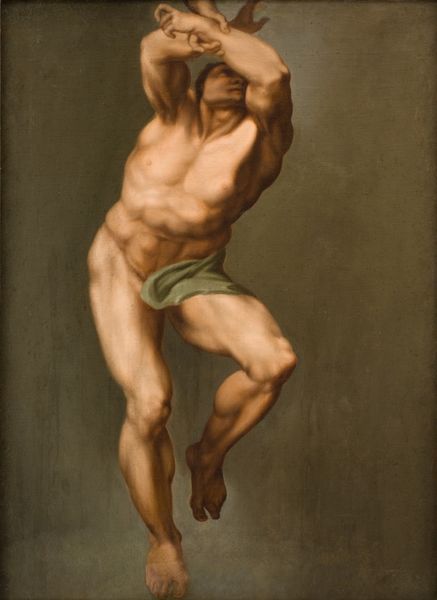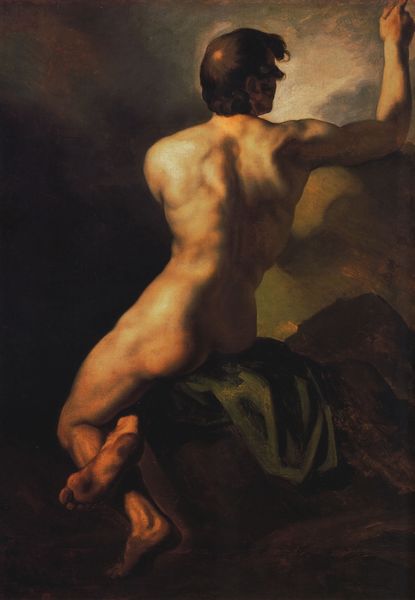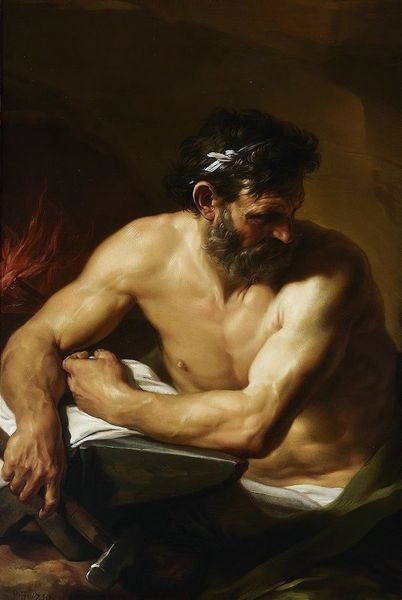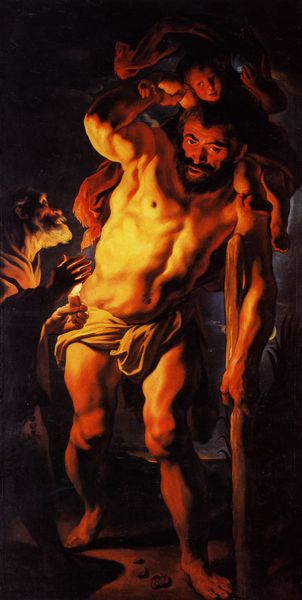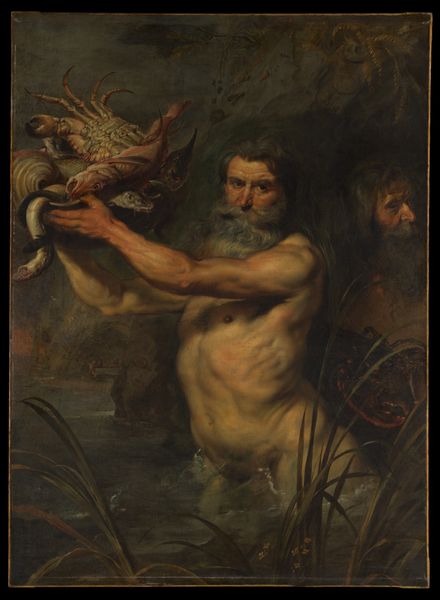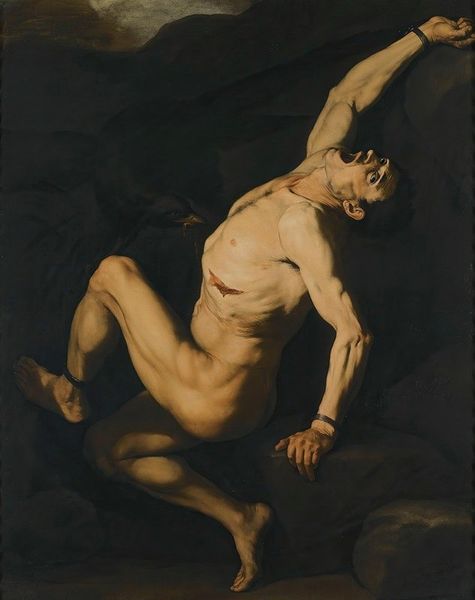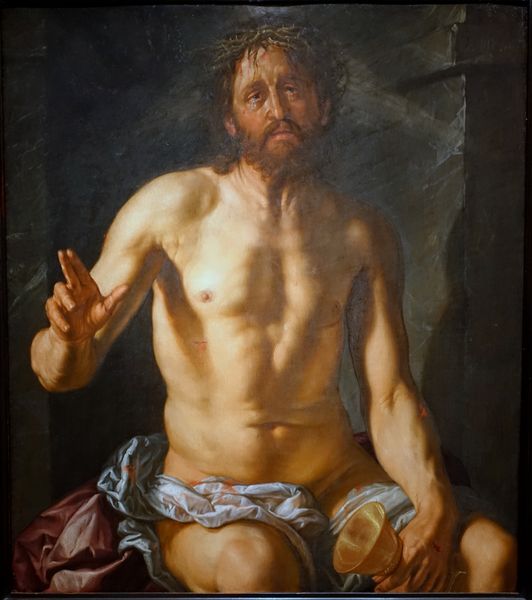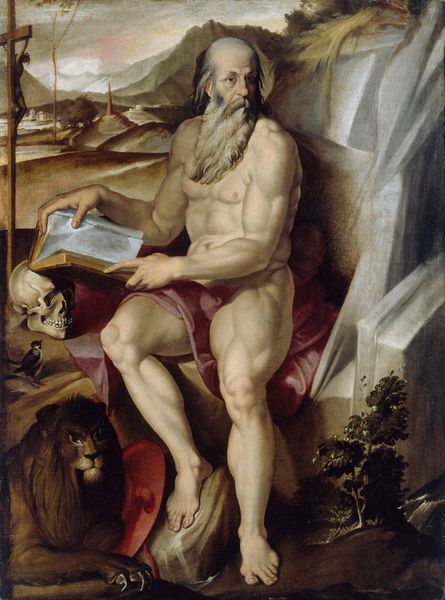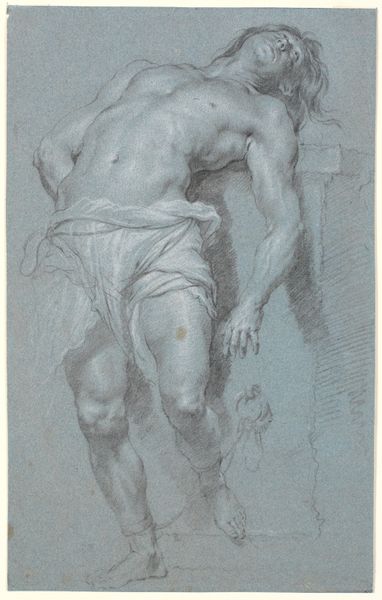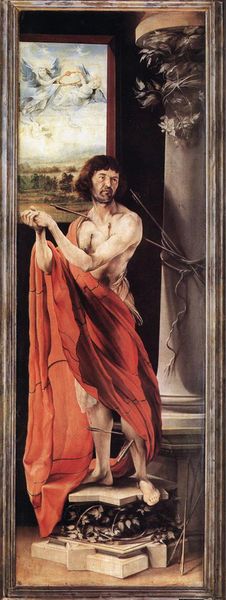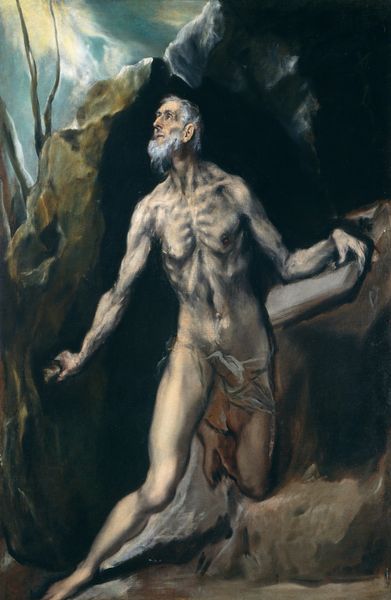
painting, oil-paint
#
portrait
#
allegory
#
baroque
#
painting
#
oil-paint
#
figuration
#
oil painting
#
history-painting
#
nude
Dimensions: 108 cm (height) x 80 cm (width) (Netto)
Curator: This is Werner van den Valckert’s *Neptune*, an oil on canvas created around 1619. Editor: He looks rather disquieted. The turbulent sea, the strained expression...and that horse seems ready to bolt! There's a definite sense of unease here, almost a premonition. Curator: Consider Neptune's historical role. As a personification of the sea, his image oscillated with the maritime fortunes of the Dutch Republic. In this case, a critical view might examine this Neptune not just as a god but as a symbol reflecting anxieties about maritime power, about the relationship between colonial expansion and individual or societal vulnerability. Editor: It's fascinating how certain motifs endure. The trident, for instance, speaks of dominion, yes, but it's also visually linked to lightning, earthquakes… elemental forces beyond our control. The rough waves contrast with Neptune’s calm gaze toward us as if to say we are foolish for fearing them. Curator: Exactly. And even the very materiality of the painting underscores this intersection. Oil paint, a substance derived in part from the sea itself—whale oil often was a key ingredient in early recipes—renders the surface of this emblem of Dutch naval authority. Editor: So, is this an emblem of raw, uncontrolled potency, of a colonial Netherlands unsure of the sustainability of that project, a man challenged by the animalistic presence behind him. Curator: I think it points to this tension, to the very idea of a maritime empire wrestling with forces, social and natural, it only thought it could dominate. Even the god must have an agenda we can understand beyond its surface. Editor: Right, an uneasy reminder that every symbol carries multiple meanings, every god its shadows. Curator: Exactly. And the sea remains…the sea. Invincible, powerful, ever beyond human control. Editor: A worthwhile, yet disquieting journey to embark upon!
Comments
No comments
Be the first to comment and join the conversation on the ultimate creative platform.
